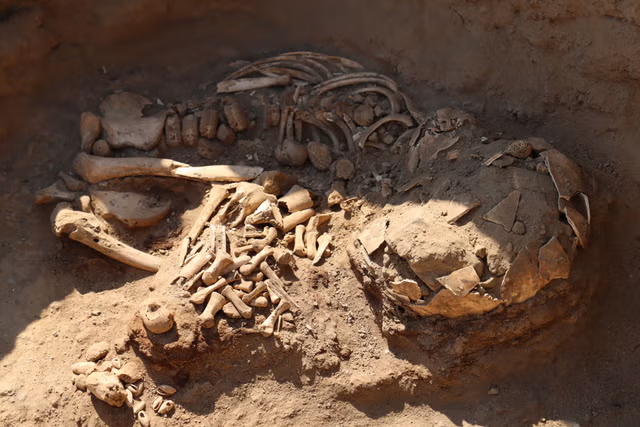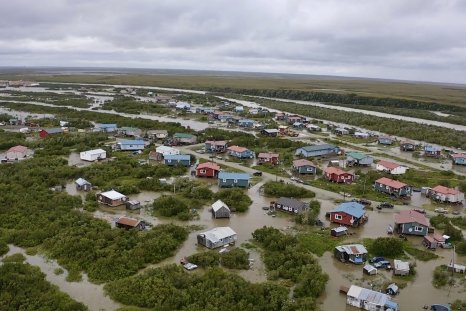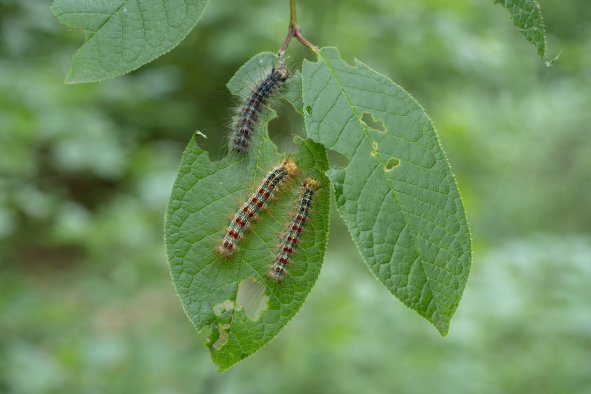As the human population increases and we build more and more infrastructure across the planet, there will be increasing overlap between humans and animals in the next 50 years.
About 57 percent of all land on our planet will see a rise in overlap between us and wildlife by 2070, according to a new paper in the journal Science Advances.
This could lead to higher levels of human-wildlife conflict such as animal attacks, as well as possibly higher rates of diseases being passed from animals to humans.
"Currently, 68.4 percent of global lands experience human-wildlife overlap, and by 2070, 56.6 percent of global lands will see an increase in this overlap," study lead author Deqiang Ma, a postdoctoral research fellow at the University of Michigan Institute for Global Change Biology, told Newsweek. "Croplands will see the largest proportion experiencing increases in overlap."
"These changes are primarily driven by shifts in human population densities rather than by changes in species richness due to climate-driven shifts in species distributions," Ma said. "Due to large expansions in human population, agricultural and forested areas are expected to experience extensive increases in human-wildlife overlap, despite a decline in species richness in these areas."
This could lead to an increased spread of animal diseases, known as zoonotic diseases or zoonoses.
"A large proportion of human-wildlife overlap may lead to increased zoonoses or the spread of other diseases, but our work did not involve projecting disease spread from wildlife," Ma said.
"COVID-19 was the result of human contact with wild animals, and there is concern that new diseases will emerge from greater encounters between people and certain wildlife species," study co-author Neil Carter, an associate professor of environment and sustainability at the University of Michigan, said in a statement.
According to the study, the main driver of this will be population growth, as opposed to climate change, with people building towns and infrastructure in new areas. Animals being forced into already-settled areas because of climate change is less of a driver of this overlap.
"In many places around the world, more people will interact with wildlife in the coming decades and often those wildlife communities will comprise different kinds of animals than the ones that live there now," Carter said. "This means that all sorts of novel interactions, good and bad, between people and wildlife will emerge in the near future."
In the study, the researchers describe how they made an index of areas where humans may move into in the future, based on economic development projections, and compared it to the distributions of over 22,000 species of amphibians, birds, mammals and reptiles.
"The index we created showed that the majority of global lands will experience increases in human-wildlife overlap, and this increasing overlap is the result of the expansion of human population much more so than changes in species distributions caused by climate change," Ma said in the statement.
Areas where human-wildlife overlap will be worse include areas where humans are already tightly packed together, including India and China.
"Another area of major concern are forests, particularly in forests in Africa and South America where we're seeing a large increase in the overlap in the future," Carter said. "The reason that is concerning is because those areas have very high biodiversity that would experience greater pressure in the future."
The researchers also found that biodiversity of species richness is projected to decline. They predict a drop in mammal species richness of 33 percent in South America and 21 percent in Africa, while amphibians, reptiles and birds are forecast to decrease in species richness by 45 percent, 40 percent and 37 percent respectively in South America.
"The decline in biodiversity—species richness—is a result of changes in species distributions due to climate change," Ma said.
This increased overlap may not be all bad, however.
"There are cases of human-wildlife interactions that are both good and bad, but we anticipate that they're going to become more pronounced," Carter said. "You also have species that provide important benefits to people, like reducing the abundances of pests."
"Hyenas and other species that are vilified or persecuted because they are scavengers provide a lot of disease reduction benefits," Carter said. "On one hand, they're viewed as a threat, but on the other hand, they're providing free health benefits."
However, the researchers found that the species that are most beneficial to us, such as birds that eat crop pests, are likely to decline as a result of human-wildlife overlap.
"What we're doing is finding those areas and saying, if you have cropland or pastures here, are you going to have species move into those areas or species moving away from those areas," Carter said. "Are those new croplands or pastures going to be an additional threat to the species or could there be ecosystem services harnessed for free?"
So, what can we do?
According to the researchers, conservation strategies will have to consider human expansion into previously uncolonized areas.
"There's also a significant environmental justice argument around the validity of telling communities that may have lived in a certain area for generations that they have to move," Carter said. "Our study suggests that with more areas of the world expected to be shared both by people and wildlife, conservation planning will have to get more creative and inclusive."
He suggests that solutions could include creating wildlife corridors to connect protected areas, or creating temporary protected areas during breeding periods.
"We care a lot about which areas can support populations of endangered species, like tigers, and how human communities interact with these species," Carter said. "In some places it's going to be really hard to do everything at once: to grow crops and have urban areas and protect these species and their habitats. But if we can start planning now, we have a lot of tools to help us promote sustainable coexistence."
Do you have a tip on a science story that Newsweek should be covering? Do you have a question about human-wildlife overlap? Let us know via science@newsweek.com.
References
Ma, D., Abrahms, B., Allgeier, J., Newbold, T., Weeks, B. C., & Carter, N. H. (2024). Global expansion of human-wildlife overlap in the 21st century. Science Advances, 10(34). https://doi.org/10.1126/sciadv.adp7706
Disclaimer: The copyright of this article belongs to the original author. Reposting this article is solely for the purpose of information dissemination and does not constitute any investment advice. If there is any infringement, please contact us immediately. We will make corrections or deletions as necessary. Thank you.



